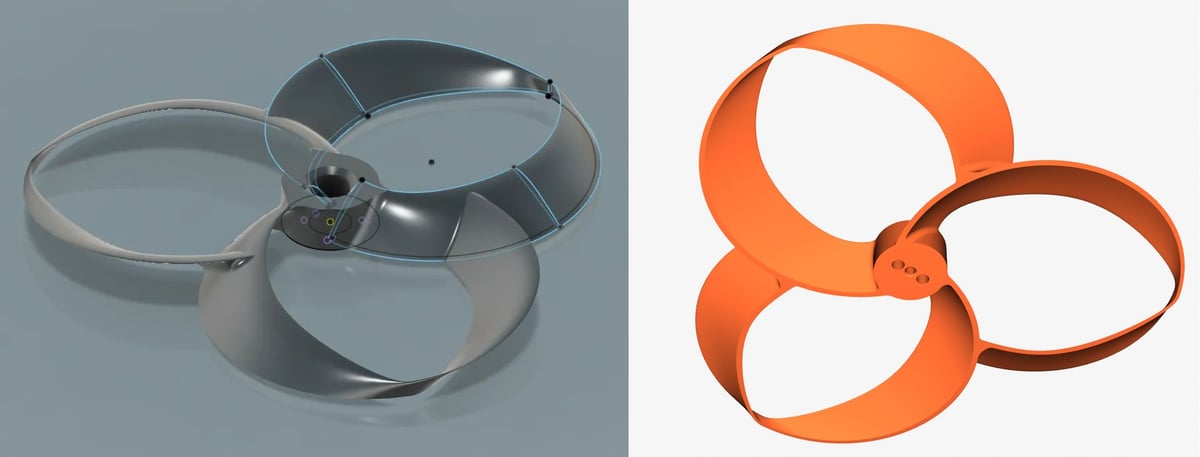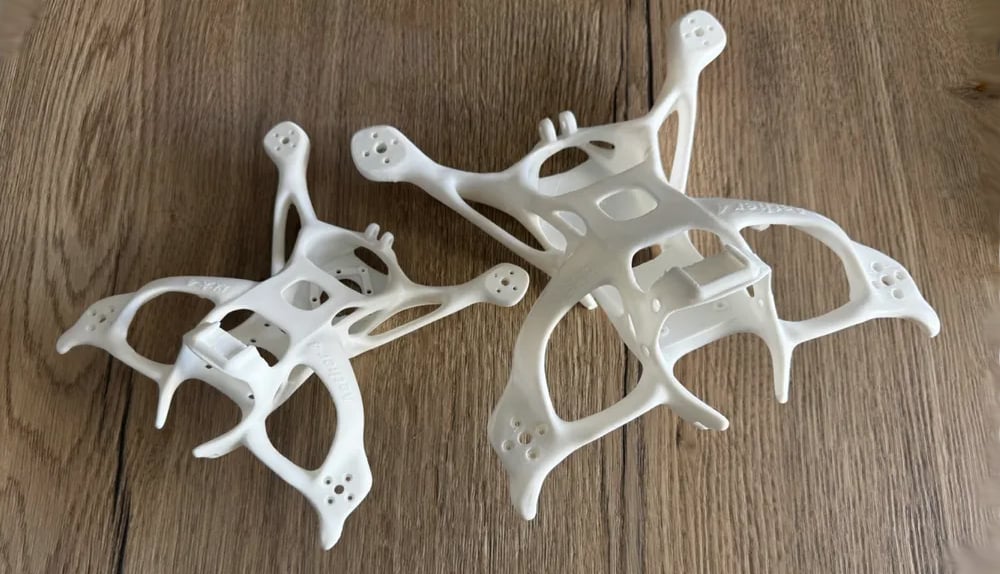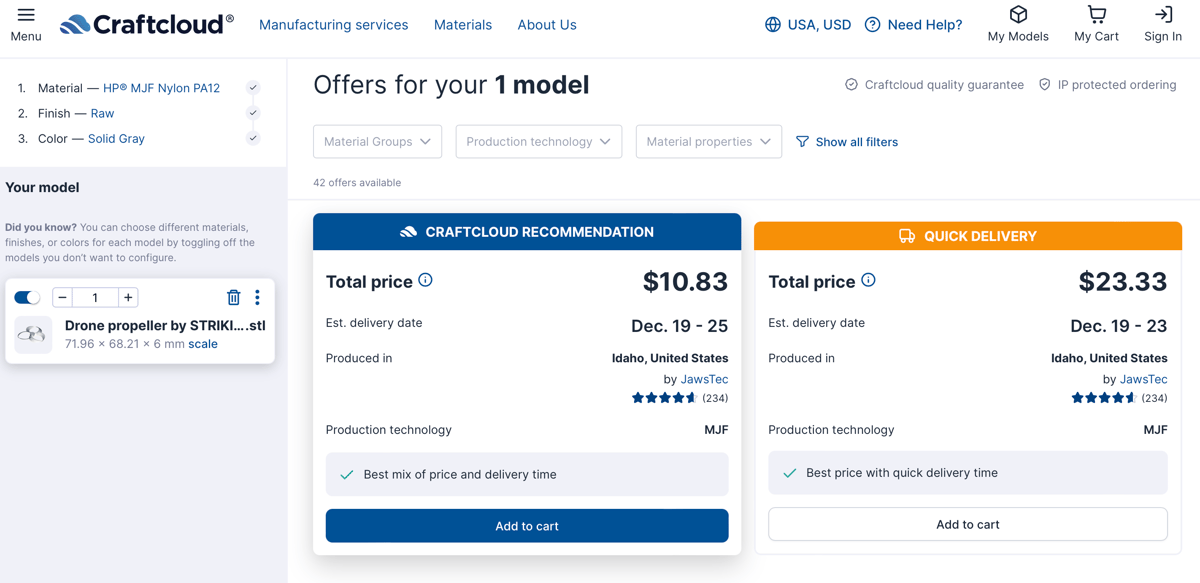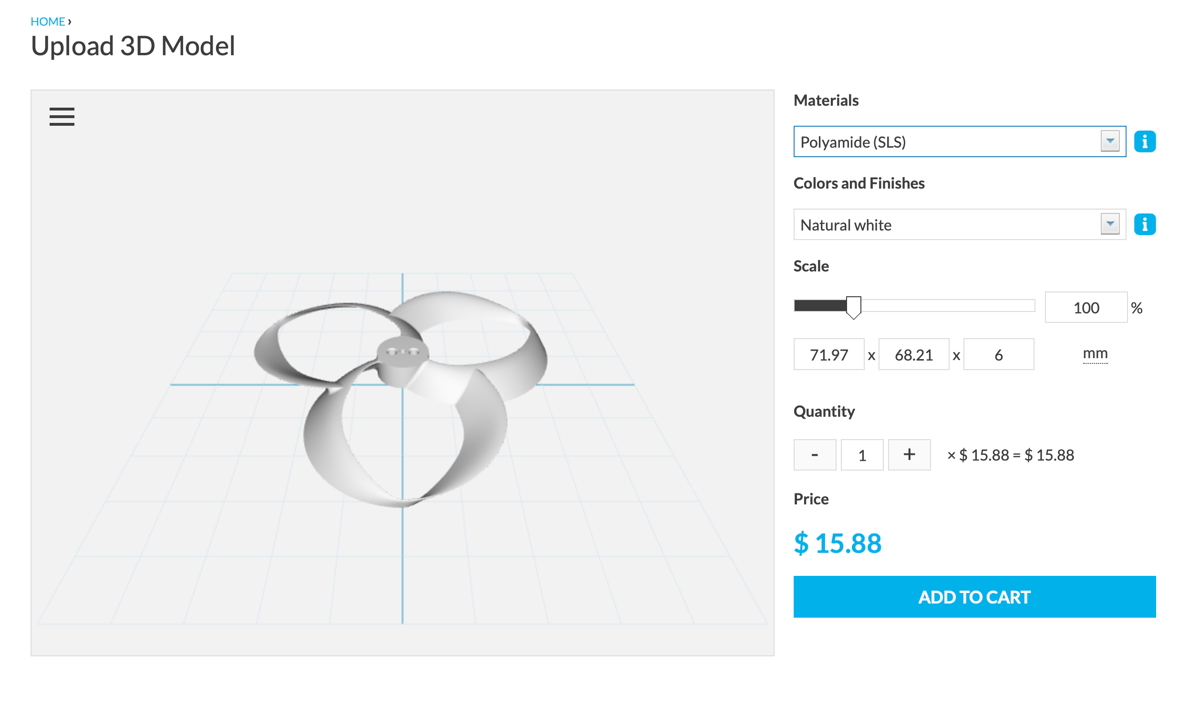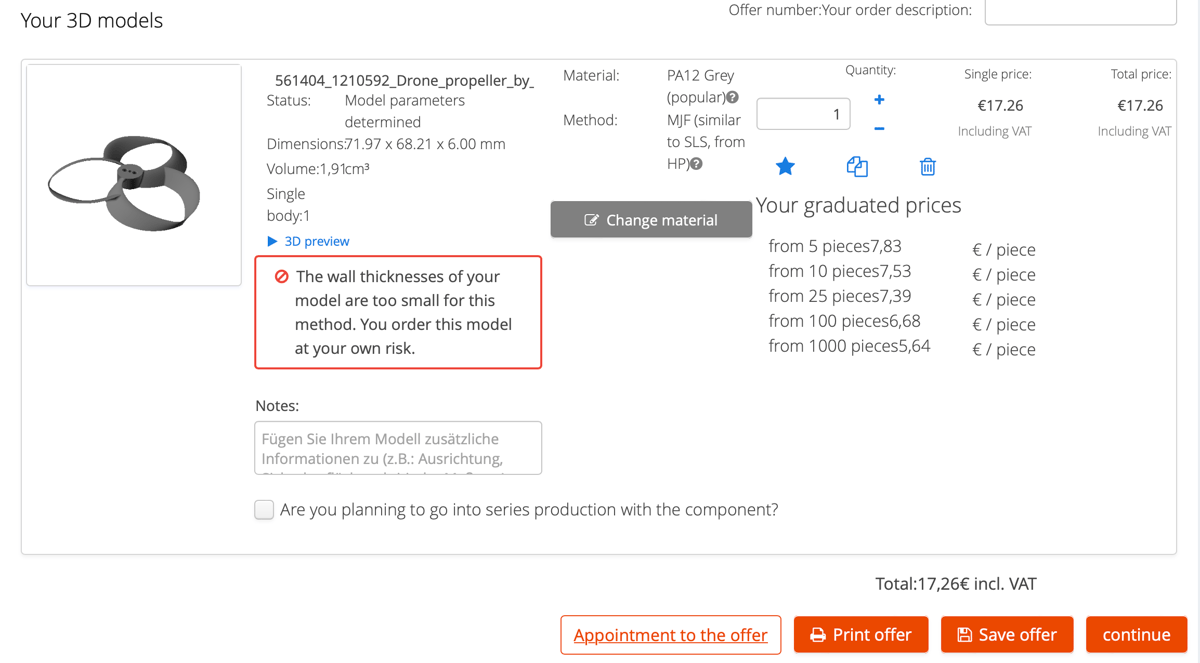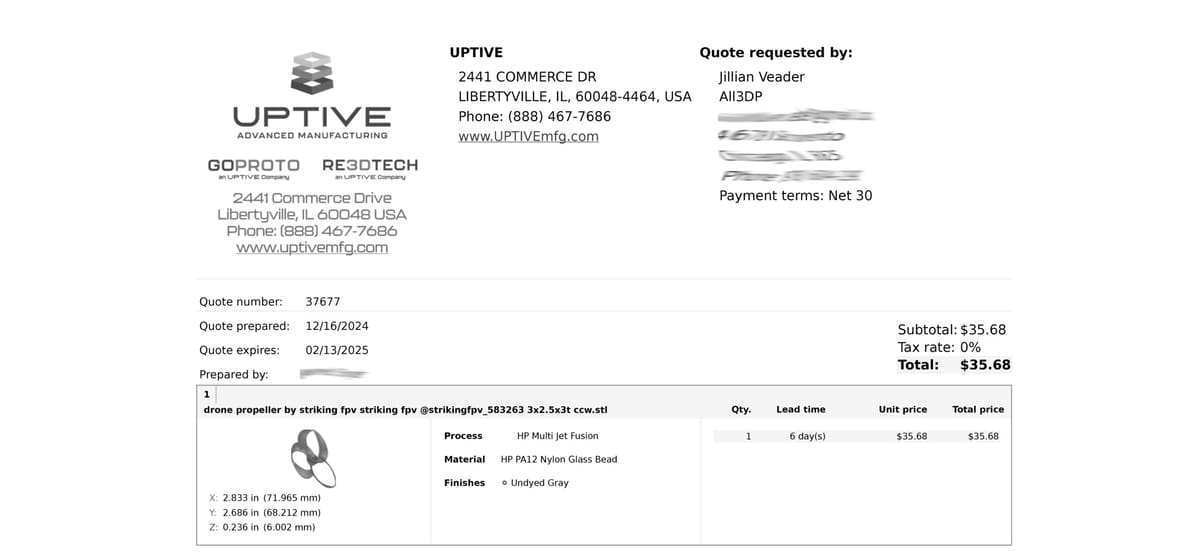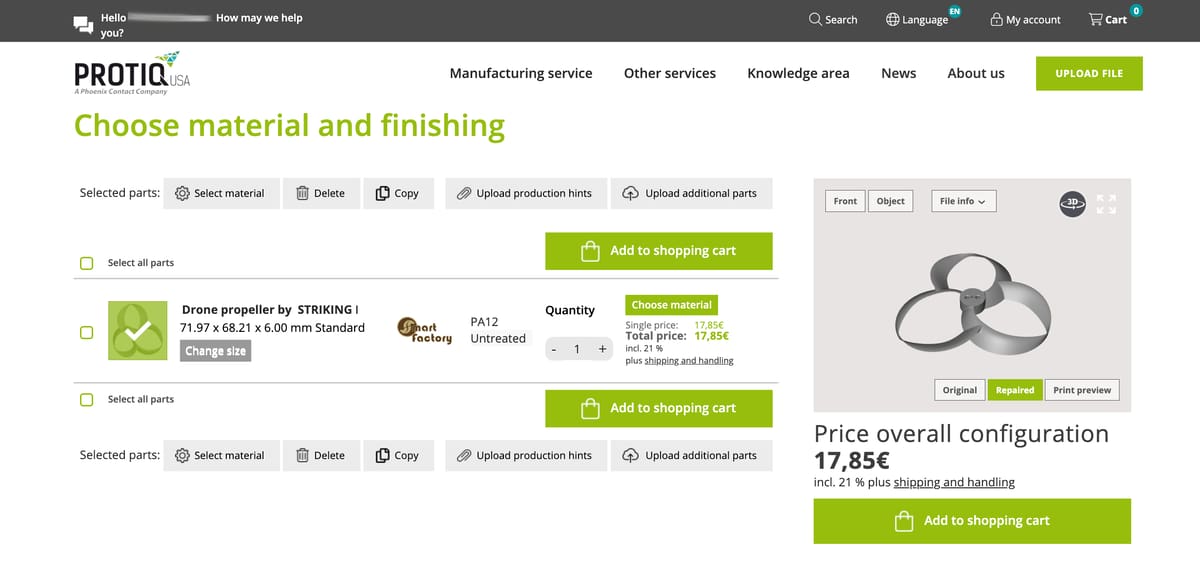Whether you are just getting into flying drones as a hobby or are an experienced drone user, there is little doubt that repairs and modifications can be difficult, time-consuming, and costly. Although there are a lot of websites out there offering replacement parts, they are often either too expensive or not to your exact specifications. Or perhaps you want to add modifications to your drone to help it fly faster or quieter.
Having your drone parts 3D printed enables you to customize them to your exact needs—down to size, material, and finish—often at a much lower cost so you can have spares on hand. You can even 3D print entire models, a cost-effective way to build your dream drone.
We’ve outlined everything you need to know about choosing the right 3D printing resource to get your drone off the ground in as little time as possible.
We’ve found five reputable 3D printing service providers offering nylon material 3D printed using a powder bed fusion method (more about the method below) and put them to the test by requesting a quote on a more complex drone part.
The sample part* we selected is a tri-blade toroidal propeller by a Printables user StrikingFPV_58326, a cinematic drone operator based in Thailand.
believe, of a reluctance of some providers to print a single part. They prefer clients who want higher volume orders, so you’ll see their prices become more competitive as volume increases. Seeing that this is a replacement part, it could be good to have a few on hand.
| Company | Technology | Sample Part Price* | Delivery |
|---|---|---|---|
| Craftcloud | MJF | $10.83 | 5-10 days |
| Materialise | SLS | $15.88 | 10-15 days |
| RapidObject | MJF | $17.87 | 15 days |
| Uptive | MJF | $35.68 | 6 days |
| Protiq | SLS | $19 | 5-9 days |
| Protolabs | MJF | $35.39 | 12 days |
3D Printing Drone Parts in Nylon
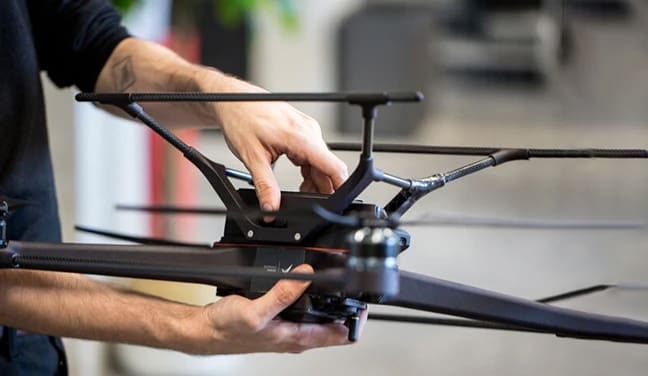
Nylon has long been one of our top picks when it comes to 3D printing objects of all kinds, but it is especially useful for drone parts because of its high strength-to-weight ratio.
Although there are other plastics, such as PEKK, a high temperature ultra strong polymer, and ABS, a all-around material, for drone parts, we recommend nylon (also known as polyamides, PA11 and PA12). It’s extremely durable and lightweight, but also more affordable than some alternatives. It’s also resistant to corrosion, making it a longer-lasting alternative to metal parts.
Having drone parts such as frames, arms, and propellers made from nylon will both minimize your drone’s weight and optimize its maneuverability, ultimately making it more energy efficient.
Nylon is also relatively impact-resistant, so if your drone encounters a hard landing, having parts that are made of nylon will reduce the chance that you’ll need to replace it. You can also opt for carbon-fiber-infused nylon which will provide added strength but could decrease the impact resistance of your part. TPU, a more flexible material than nylon, is a popular option is you want parts that will bend but no break when crash landing. TPU, however, is generally heavier than nylon.
l also help to reduce any vibrations that could disrupt footage and flight control in general because it has a bit of bend to it. If you’re flying in varying temperatures and weather conditions, nylon is ideal for its weather resistance and is less prone to degradation from UV light than other materials, so it’ll keep your drone looking and functioning as it should.
When selecting the material for your drone part, there are also different technologies you can choose from. Here, we opted for powder bed technology, either SLS (selective laser sintering) or MJF (Multi Jet Fusion). These are not your only options, however, and depending on where you choose to source your materials, there are also options for FDM (fused deposition modeling), CCF (continuous carbon fiber) among others. Powder bed technologies produce parts that are more anisotropic than FDM, meaning there’s strength in every direction, whereas FDM can have weaknesses along the layer lines.
3D Printing Services for Drone Parts
We reached out to several 3D printing service providers to obtain a quote for a 3D printed drone propeller. Below are the top five we recommend for affordability, fast shipping, and ease of access.
Obtaining a quote from all five companies was a streamlined and easy process. Simply upload an STL file and answer a few questions, and you’ll either receive your quote instantly or within a day or two, depending on the company.
Craftcloud
Craftcloud was one of the simplest platforms we explored for this article. Its interface was user-friendly while offering a wide range of materials and other customization options. Quotes were generated instantly, aggregating the best offers from multiple providers, saving you the time it takes to manually research lots of providers. While we highlighted the cheapest option for delivery, there is also an option for expedited delivery of the part for an additional cost — a great option to have if you require an important piece of equipment but are short on time. Craftcloud is ideal for both individuals who need fast and affordable prototypes, or small to medium-sized businesses in need of custom parts for their drones.
Materialise
Materialise serves customers in industries that seek complex and high-precision 3D printed parts, such as the automotive, aerospace, healthcare, and manufacturing sectors. This is great for those looking for specialized parts and industrial-grade materials. That being said, acquiring a quote for a single part as an individual customer was simple, with several options to choose from and an estimated price generated in seconds.
RapidObject
RapidObject is true to its name, and is a great source for customers seeking both low and high-volume production, with quotes generated instantly. There are options for small spare parts and prototypes (ideal for private customers), as well as serial production for businesses and startups.
Note that the company is based in Germany, so shipping to the US may take longer than the other companies listed here. Estimated prices were converted from Euros to USD for the purpose of this guide.
Uptive
Although obtaining a quote from Uptive was not instant, it was delivered via email within two days of our initial inquiry. Uptive emphasizes rapid production and delivery of parts, making it ideal for those with urgent needs, such as a quick repair solution for your drone. Although the estimated price for the drone propeller we requested was more than other companies offered, the fast turnaround time and excellent customer service is worth it depending on your individual needs.
Protiq
Protiq is an options for customers in Europe. It allows both businesses and consumers to compare dozens of sources for their requested 3D printed parts but offers lower prices to businesses with a big red “no sale to private customers” label on the best-priced options.
The interface isn’t the easiest to use but if you’re in Europe this is still a good option since you can select a service provider from the marketplace that in your country. There’s also a wide range of materials and technologies, including MJF and SLS.
Protolabs
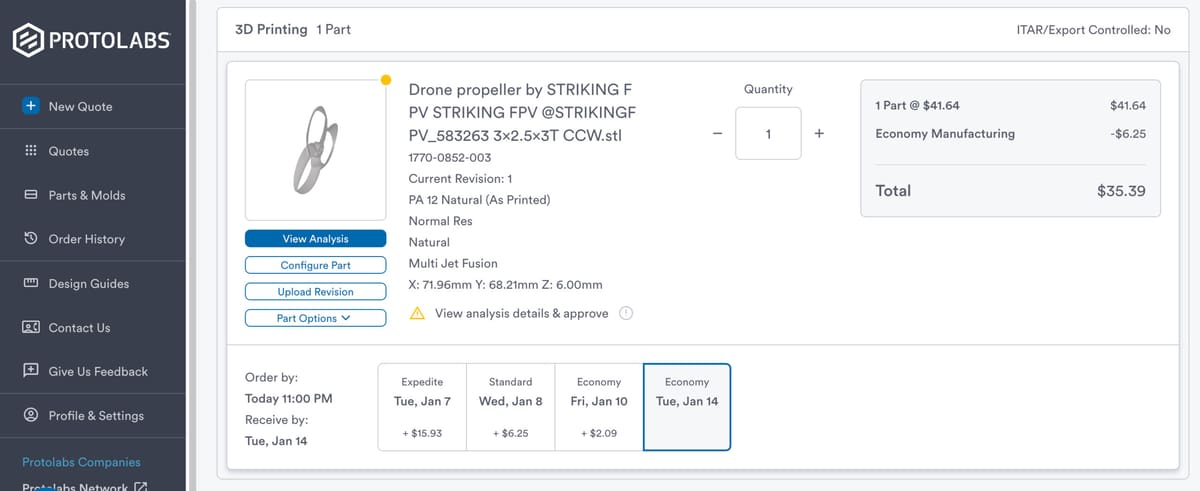
Minnesota-headquartered Protolabs makes their claim to fame with speed. The company promises very short lead times. They also have a digital quoting platform, which provides not only instant quotes but also design analysis — to make sure what you want to print is printable.
The company offers both nylon PA12 in MJF and SLS, although the SLS was a bit more expensive. Our quote was a bit on the high side for the time it took but the ordering process couldn’t have been easier. Plus, Protolabs offers nylon in white with custom finish options so there’s potential to add some flare to your drone kit.
You May Also Like:
License: The text of "Need 3D Printed Drone Parts? Six 3D Printing Services Put to the Test" by All3DP Pro is licensed under a Creative Commons Attribution 4.0 International License.
